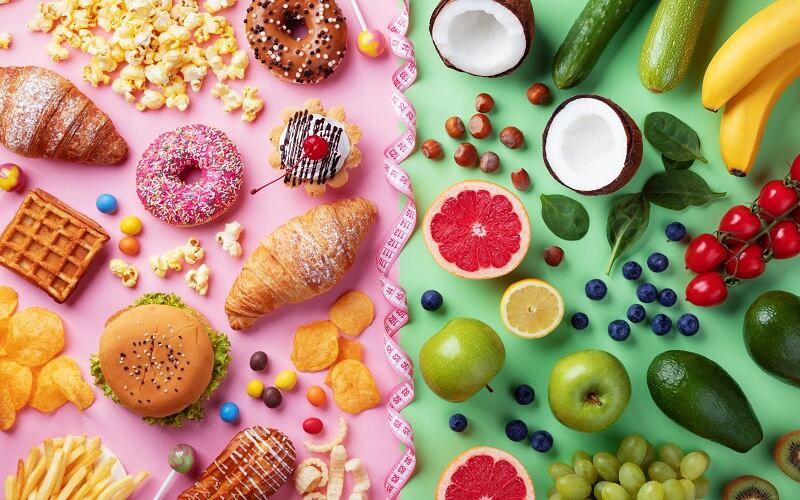In the webinar, Pike shared research that will be available in the forthcoming 2023 IFIC Consumer Research on Processed Foods report, available later this month, that examines Americans' attitudes on health and processed foods, taken from a survey of over 1,000 respondents.
Overall, most consumers (84%) say that eating a healthy diet is important to them, but how they are doing it varies greatly. Among the top eating patterns and diets, high protein was number one with 18%, mindful eating at 17%, and calorie counting, clean eating, and intermittent fasting tied at 12%.
Though consumers are looking to eat healthier, taste and price remain the most important drivers for buying a food or beverage. When asked to rank purchase out of a five-point scale, 87% of consumers said taste was the most important, giving it a four or five, price was second at 76%, and healthfulness at 62%, according to IFIC's separate 2023 Food and Health Survey.
IFIC also asked consumers to select two ways they are improving their health. Among the top first choices, 18% said they were eating more fruits and vegetables, 14% were practicing balance, variety and moderation, and 13% said they were eating less sugar, per the 2023 IFIC Consumer Research on Processed Foods 2023 report. This was similar across the second choice, with 15% of consumers saying they were eating more vegetable, 13% practicing variety and moderation, and 11% were eating less sugar.
The report also revealed that 8% of consumers prioritized eating fewer processed foods as their first choice, while 10% chose it as their second.
“When we asked this question in past years, intermittent fasting and clean eating calorie counting, those were higher on the list, and now we're seeing a little bit of a shift toward focusing on protein, focusing on mindfulness, perhaps taking a more holistic approach. So, as we think about how important it is for consumers to eat healthy this, I think also helps frame up the context with which they're trying to do so," Pike said.
What products consumers think are processed
Most Americans regularly eat processed foods, with 51% saying they eat them some of the time, 25% rarely do, and 18% a lot of the time, according to IFIC’s 2023 Food and Health Survey. However, consumers are more divided on whether processed foods can be part of a healthy diet with 53% saying yes, they can; 28% saying, no, they can't; and 19% didn't know, and 76% said they factor if something is processed into their purchase decision, per the same report.
However, most consumers can't fully explain what processed foods are, despite previously saying they are looking to limit them. Nearly half of consumers (48%) said that they knew what processed foods were but couldn't fully explain them, and 23% didn't think they could explain what processed foods were at all, per the 2023 IFIC Consumer Research on Processed Foods report.
According to the NOVA classification system, which divides food into four categories, processed foods are those made by industry with salt, sugar, oil, and other ingredients to preserve or make them more palatable. Examples include freshly made cheese, beef jerky, fresh bread, and canned vegetables. Ultra-processed foods, which have become a hot-button issue, are defined as those made with industrial ingredients made or extracted from foods and food constituents and may include flavor enhancers, colors, or additives. Examples include pasta, cereal, infant formula, and margarine.
Consumers also had a variety of ways that they used to determine if a food is processed. Nearly half of all consumers (49%) looked at the ingredient list to determine if it was processed, while 46% considered the form (fresh produce or shelf-stable), and 41% looked at the Nutrition Facts label. Bottom of the list was 26% of consumers who considered location (center aisle vs. perimeter), 25% looked at icons or claims on the front of the package, and 25% said they look at the brand name.
IFIC also asked consumers to consider what foods across several categories, including fruits and vegetables, dairy products, and desserts and snacks, were processed and not in the forthcoming
Most Americans believed that canned fruit (60%), veggie chips (58%), and fruit juices (53%) were processed, while a smaller percentage thought frozen vegetables (31%), fresh fruit (23%), and fresh vegetables (21%) were processed.
In the dairy department, most Americans thought American cheese slices (71%), cheese sticks (65%), flavored yogurt (62%), and non-dairy and dairy-based creamers (60% each) were processed. However, yogurt products were largely seen as being less processed, with 49% of consumers saying full-fat plain Greek yogurt is not processed, 50% saying the same for homemade yogurt smoothies, and 36% of consumers each saying the same for Skyr yogurt and kefir.
Despite consumers largely considering yogurts less processed, the data shows that American consumers are less familiar with Skyr yogurt and kefir might be factoring into their perceptions, with 34% of consumers saying they were unsure if Skyr yogurt was processed and 43% for kefir — the highest unsure rate among the dairy category.
Lastly, in desserts and snack foods, most consumers thought store-bought cookies (75%), candy (73%), ice cream (73%), and cake (68%) were processed, while 51% of consumers saw air-popped popcorn as being not processed, and 41% said the same for dark chocolate and homemade cookies.





